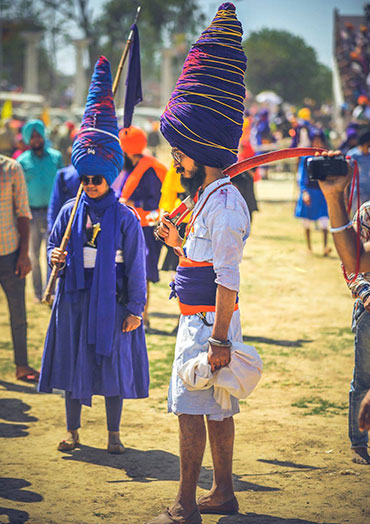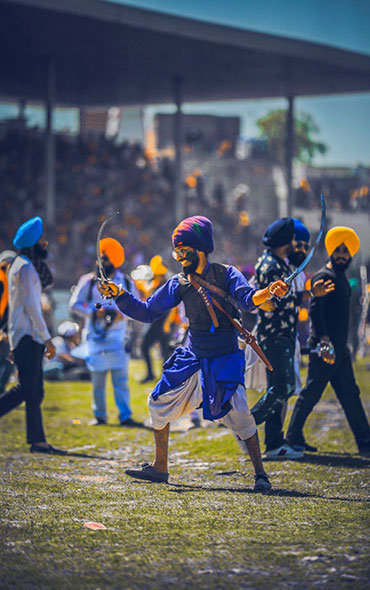Hola Mohalla –The most vibrant Sikh festival in Punjab
Celebrated a day after the Hindu festival of colours, Holi, Hola Mohalla is one of the most vibrant festivals of Punjab. The Sikh community is known as one of the bravest and uninhibited communities of India. This spring festival of March is a significant celebration for them. Even though this is aweeklong festival, reserve 3 days for at Anandpur Sahib to see the action in full regalia.
Hola Mohalla
The word ‘Hola’ is a derivative of a Punjabi term which is used as a fervor-filled cry at onset of an attack. ‘Mohalla’ on the other hand has Arabic roots and means an army battalion or military regiment marching in full swing. The meaning of the words translates into the exact energy and bustle at the festival grounds. In the daytime, demonstrations of Gatka, the Sikh martial art, and other military sports performed by the Nihang warrior sect of the Sikh fascinate visitors. The evenings are more soothing with prayer services and kirtan (singing of hymns selected from Guru Granth Sahib) in the Gurudwara. The week long festivities end with the grand finale of martial arts showcase and a religious parade around the small town.

History
The origin of the festival goes back to the 17th century, when the 10th Guruof the Sikhs, Guru Gobind Singh in the middle of a battle with Aurangzeb, the Mughal leader. The Guru created a framework for battles and called it Khalsa Panth. In this, he listed the rules and methods of warfare which would empower the Sikh community for centuries to come. The otherwise peace-loving and hospitable community had to don this aggressive front to match the vigor of the Mughals. Guru Gobind Singh would oversee mock battles and practice sessions himself to encourage and fine-tune methods of fighting. These skills and weapons were unique to the community and ideal to throw off unsuspecting enemies. The augmented spirit of battle was juxtaposed with festivities to mark the arrival of spring.Poetry and ballads became in important part of the tradition. Today, the town of Anandpur Sahib, Kiratpur Sahib and the foothills of the Shivalik Mountains, and other Gurdwaras around the world celebrate the genesis of the period that gave the community excellent fighting skills.

Festivities
The art of warfare is the main highlight of the festival. The week is a commemoration to Sikh warriors in which the current generation showcases ancient, modern and ceremonial weaponry as listed by Guru Gobind Singh. The order of saint-soldiers created by the tenth Guru to stand up against the oppressive Mughal tyranny and injustice, comes alivetill date. This is the day to take first row seats at the Anandpur Sahib grounds to see the shastra (weaponry) display like the barchha (long spear), barchha nagni (javelin with a corkscrew spearhead), barchhi (slender spear), bhag nakh (tiger claw weapon), bothatti (lance), chakar (throwing ring), dhal (shield), flails, gurj (mace), kataar (handheld piercing device that can rip through an armour), kirpan (short curved sword), khanda (double edged sword), khurkri (broadsword), lathi (stick), talwar (slim sword) and teer (short spear, arrow).The martial arts performance are the main highlight of the entire day. Blue robed Nihang sardars take tothe grounds in mock fights, keeping the energy high
Given that this also marks the arrival of spring and coincides with Holi, bright dry colours and water are part of the festivities. People douse each other in fun and happy red, yellow and green smiling faces are not uncommon to see in the town. The evenings are calmer with religious songs sung at the Gurudwara and prayer meetings that bring everyone together. Naturally, food is the epicenter for the fun part of the evenings. Hola Mohalla is one of the biggest cultural events for Punjab, where the calm Shivalik hills and their foothills get a spike of energy in March. Thousands of footfalls in the otherwise slow paced city makes the atmosphere come alive.


